Strophanthus amboensis
Strophanthus amboensis (Schinz) Engl. & Pax.
Family: Apocynaceae
Common names: elephant vine, knob-stemmed poisonrope (Eng.); knopstamgiftou (Afr.); omhundure (Otjiherero); mangala-ndumbu (Lunyaneka, Muila & Muquilenge); muzua-nganga, mulembelembe (Kimbundu).
Introduction
When the Elephant Vine is well maintained, it can grow into a reasonable-sized bushy tree with extraordinary pretty, faintly but sweet-scented flowers that can not only attract pollinators to a garden when in flower, but are also an interesting feature plant when carrying its large fruit after pollination.
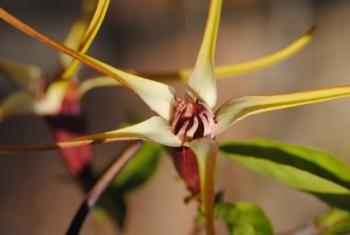
Figure 1. Close-up of the flower of Strophanthus amboensis.
Description
Description
Plants are usually shrubs of 1–4 m tall, with long, slender branches, rarely a liana of up to 10 m high. The branches are brown to grey and have characteristically corky outgrowths called lenticels.
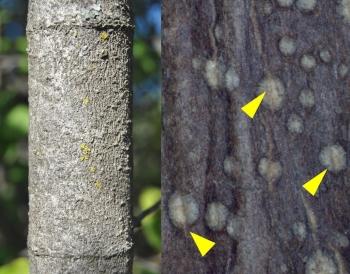
Figure 2. Trunk (left) and young stem (right) with lenticels (indicated with arrows).
The leaves are opposite, ovate, 20–120 × 12–60 mm, with a rounded base and acute tip, coriaceous and glabrous to shortly pubescent and are carried on a petiole of 2–19 mm long.
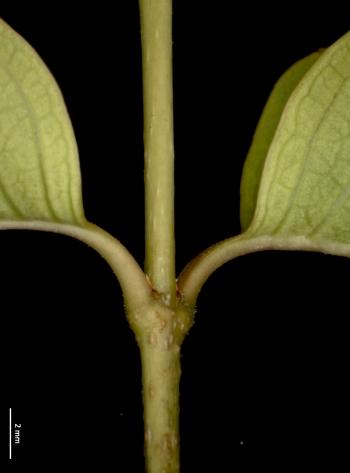
Figure 3. Young stem with opposite leaves at the node and young lenticels.
The flowers are carried in inflorescences that are at the ends of branches, usually 1–12 flowers per inflorescence; usually with 1–3 flowers open at a time. The stalks are also glabrous to pubescent.

Figure 4. Flowering at terminal ends of branches.
The corolla consists of a tube of about 12–30 mm long (becoming slightly wider towards the top) and is usually dark red or maroon on the outside and maroon, red, or pinkish on the inside, alternating with white, longitudinal stripes. At the mouth of the tube ± where the lobes are attached to the tube, there are 10, small, tooth-like corona lobes (in pairs of 2 per segment) — this is one of the outstanding characters of Strophanthus. In this species the corona lobes are also dark maroon or reddish. The segments are long and tapering (25–80 mm wide and 3–8 mm broad), usually whitish at their base becoming yellow or orange toward the tips.

Figure 5. Close-up of the mouth of a flower showing the corolla segments and tube and also the paired tooth-like corona lobes at the base of each segment.
The fruit (also known as follicles) are glabrous to pubescent, relatively woody and 120–280 mm long and 15–25 mm broad and spreading at an angle of 180–270°.

Figure 6. Fruit. A paired follicle (develop from one flower) — note the groove on lower follicle where the fruit will split open when mature.
The seed consists of an ovate grain (8–16 mm long), a beak that is glabrous (22–50 mm long) and a coma (22–70 mm long), that carries many coma-fibres.
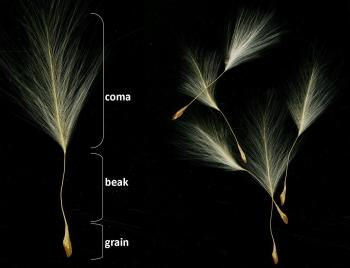
Figure 7. The seed with its different parts.
Flowering time is spring to midsummer (September to February) and sporadically throughout spring and summer. Plants are slow-growing but long-lived.
Conservation Status
Status
No conservation status could be traced for Angola and the Democratic Republic of the Congo, but in Namibia it has been assessed as Least Concern (LC).

Figure 8. Strophanthus amboensis in habitat.
Distribution and habitat
Distribution description
Plants occur naturally from the southern parts of the Democratic Republic of the Congo (DRC), southwards through Angola, to central Namibia. The habitat is usually amongst boulders or in rock fissures on outcrops in savanna woodland, but in the western Caprivi, it is also found on sandy plains.
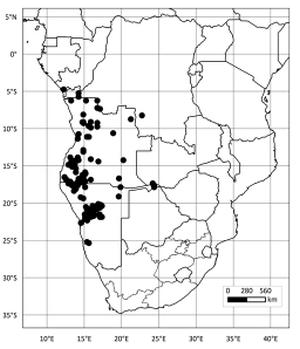
Figure 9. Known distribution of Strophanthus amboensis.
Derivation of name and historical aspects
History
The generic name is derived from the Greek words strophos, meaning ‘twisted cord’ and anthos, meaning ‘flower’, in reference to the outstanding characteristic in many species — the twisted corolla lobes. The label of the type specimen of Strophanthus amboensis, on which the description was based, indicated the location of the collection as “Amboland”. This is probably from where the name amboensis was derived which is a phonetic version of Ovamboland, a former homeland at the northern border of Namibia with Angola, from where the type specimen originates.
The genus Strophanthus is distributed globally in the tropics of the Old World in Africa, Madagascar and Asia, with no species shared between Africa and Asia (Beentje 1982). The bulk of the ± 42 species are found in Africa (79%) with only 9 species widely distributed in Asia (21%) and only S. boivinii in Madagascar. In southern Africa there are 6 species; with only S. amboensis and S. kombe listed for Namibia and ten for Angola. Of the southern African species, only S. amboensis is geographically isolated.
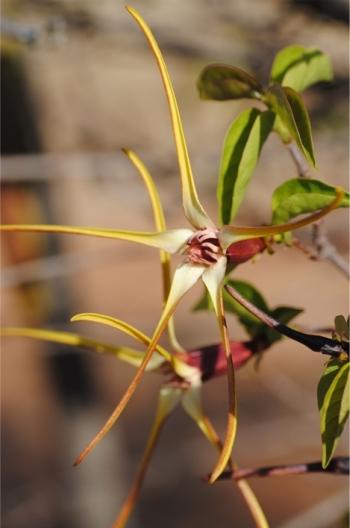
Figure 10. Expanded corolla lobes or tails here erect, in most species they are hanging and dangling with the slightest air movement
Ecology
Ecology
Very little information is known on the biology of the genus Strophanthus. The only pollinator that has been mentioned in literature is the butterfly, Danaus chrysippus, that pollinates S. speciosus. It is, however, presumed by Henk Beentje, who is the last to revise the whole genus, that in general flowers could be pollinated by butterflies based on the fragrance reported for many species, predominant colour patterns and morphology of the flowers. Movement of especially the corolla-tails in the wind could also perhaps be attractive to pollinators.
By the time that the fruits mature, they are usually orientated so that the sections where the follicles will split, are facing upward. When the fruits eventually split, the decrease in relative humidity cause the fibres at the end of the seed to expand into a parachute of many fibres. The seed is then dispersed by the gentlest breeze.
The plants are poisonous and contain glycosides and some authors report that the plants are hence not browsed. Wink & Van Wyk (2015), however state, that very few cases of poisoning have been reported.
In its natural distribution plants grow in mostly frost-free environments or in microhabitats (eg. amongst boulders) where it can survive both low temperatures and fire.
Uses
Use
Since ancient times, the seed and latex of species of Strophanthus have been used in Africa and Asia in the preparation of arrows, and the knob-stemmed poison rope is no exception. The poison apparently acts quickly and even very little quantities are said to be lethal. The usual practise was to pulp a single seed, mix it with saliva or other additives to form a paste, and to smear the resulting pulp on the tips of the barbs of arrows, which is then left in the sun for several hours before it is used. The arrow was launched by blowpipe, bow or crossbow. When the poison enters the bloodstream death is said to occur in humans within 15 minutes and in average game within 20 minutes or longer in large animals, like elephants. When an animal was killed in this way for the consumption as food, the affected area around the point of penetration of the arrow was cut away and discarded. In omhundure, the active component of the poison is one of a group of glycosides called strophantidin. These glycosides affect the muscle fibres (especially those of the heart) causing the heartbeat to slow, followed by convulsions and eventual total heart failure. As an antidote tannic acid, vinegar or a decoction of the bark of the baobab (Adansonia digitata) may be employed by smearing one of these into the wound — presumably any strong acid will serve as an antidote. Despite the seed containing these very poisonous glycosides, very few cases of poisoning have been reported and because of the low rate of absorption, only when taken in large quantities will it be lethal, and consumption would probably rather induce vomiting.
Compounds from the plant are medicinally used in treatment of rheumatism (a decoction of the roots or leaves are used), venereal diseases (using an enema of the roots) and scabies (use pounded root mixed with oil as a topical ointment). Seeds have been used for the extraction of various compounds in the production of cortisones. It may even act as a charm against evil.
Despite the reports of plants being cultivated in various areas outside their natural environment, it seems not to be available in the horticultural trade and probably only grown by enthusiasts. The plant indeed has attractive flowers and as an architectural plant changing in facet through the seasons and as it is longlived, may well be considered to be developed as an ornamental plant.
Growing Strophanthus amboensis
Grow
It has been reported to be cultivated in Uganda, Indonesia and South Africa, but never on large scale commercial endeavours. It is most probably best suited as a container plant in areas outside its natural distribution. In frost free areas it may also be used as a background plant when pruned and trained into a neat shrub.
Plants easily grow from seed. Sow seed with the onset of the rainy season in loam to sandy soils and keep moist. Preferably use larger containers as the roots are sensitive and easily get damaged when transplanting, which lead to the death of seedlings. Seed germinate within 1 to 2 weeks. Young plants grow very slowly, especially in the first 3 years or so, producing only about 3–6 pairs of leaves in a year. As the plant gets well-established, its growth rate increases. It is long-lived, known to grow for more than fifty years. The only pests observed in young plants, are attached to the roots by mealy bugs.
References
- Beentje, H.J. 1982. A monograph on Strophanthus DC. (Apocynaceae). Mededelingen Landbouwhogeschool Wageningen 82,4: 1–191.
- Beentje, H.J. 1985. Apocynaceae. In Flora zambesiaca 7, 2: 468–480.
- Bester, S.P. & Condy, G. 2011. Strophanthus speciosus. Flowering Plants of Africa 62: 94–99.
- Bruyns, P.V. 2014. The Apocynaceae of Namibia. Strelitzia 34. South African National Biodiversity Institute, Pretoria.
- Codd, L.E.W. 1963 Apocynaceae. In Flora of southern Africa 26: 289–295. Department of Agriculture, Pretoria.
- Craven, P., et al. 1999. A checklist of Namibian plant species. South African Botanical Diversity Network Report No. 9., National Biodiversity Institute, Pretoria.
- Curtis, B.A. & Mannheimer, C.A. 2005. Tree Atlas of Namibia. National Botanical Research Institute, Windhoek.
- Leistner, O.A. (ed.). 2000. Seed plants of southern Africa: families and genera. Strelitzia 10. National Botanical Institute, Pretoria.
- Palmer, E. & Pitman, N. 1972. Trees of southern Africa. Balkema, Cape Town.
- POWO [Plants of the World Online]. 2018. World Checklist of Strophanthus DC. Facilitated by the Royal Botanic Gardens, Kew. Published on the Internet; http://apps.kew.org/wcsp/ Retrieved 30 July 2018.
- PROTA. 2018. Plant Resources of tropical Africa Database. http://www.prota.org
- Stapf, O. 1902. Strophanthus. In W.T. Thistleton-Dyer, Flora of tropical Africa, 4(1): 167–187. L. Reeve & Co, Ltd., The Oast House, London.
- Watt, J.M. & Breyer-Brandwijk, M.G. 1962. The medicinal and poisonous plants of southern and eastern Africa , edn 2. Livingstone, Edinburgh & London.
- WCSP [World Checklist of Selected Plant Families]. 2018. Strophanthus amboensis. Royal Botanic GARDENS, Kew. Retrieved August 2018.
- Wink, M. & Van Wyk, B.-E. 2008. Mind-altering and poisonous plants of the world – an illustrated scientific guide. Briza Publications, Arcadia, Pretoria.
Credits
S.P. Bester
National Herbarium, Pretoria
September 2018
Plant Attributes:
Plant Type: Shrub
SA Distribution:
Soil type: Sandy, Loam
Flowering season: Spring, Early Summer, Sporadic/All year
PH:
Flower colour: Red, Pink, Cream
Aspect: Full Sun
Gardening skill: Challenging
Special Features:
Horticultural zones









Rate this article
Article well written and informative
Rate this plant
Is this an interesting plant?
Login to add your Comment
Back to topNot registered yet? Click here to register.